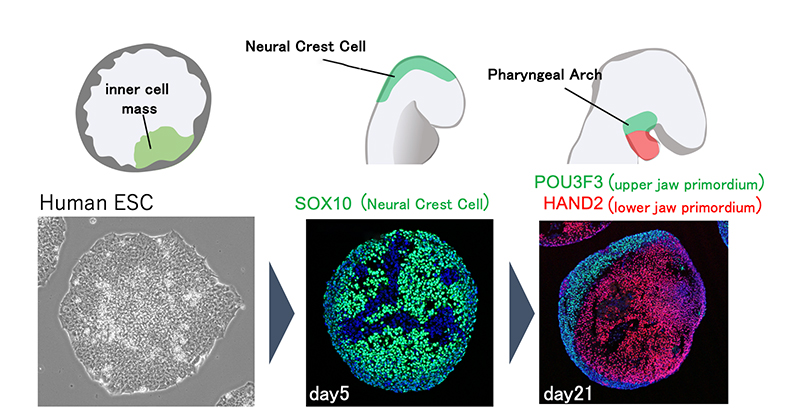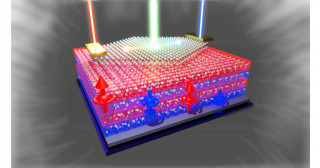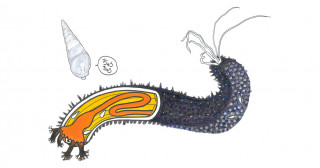Kyoto, Japan -- Mother Nature is an artist, but her craft of creating animal faces requires more than a paintbrush and palette. Such highly complex shapes originate from their respective transient neural crest cells.
These embryonic pluripotent cells within the facial primordium -- the early development form -- may be necessary for forming proper facial structures. However, analyzing the molecular mechanisms in such early stages of development poses many technical challenges.
Now, a group of Kyoto University researchers have produced neural crest cell-rich aggregates from human pluripotent stem cells and developed a method to differentiate them in cell populations with a branchial arch-like gene expression pattern.
"After the cell populations differentiate into precursors of maxillary and mandibular cells in response to external signalling factors, these populations spontaneously form patterns of the facial primordium," explains Yusuke Seto of KyotoU's Institute for Life and Medical Sciences.
This cartilage-like structure, reminiscent of Meckel’s cartilage, is formed locally within the aggregates.
"We aim to establish a model for studying early facial development by using the properties of human pluripotent stem cells to generate in vitro tissue resembling the bronchial arch of the primordial face," adds Ryoma Ogihara, also of the Institute.
Researchers are examining the various developmental processes that cause interspecific and individual differences in facial structure to explain conditions such as craniofacial disorders.
"Using our in vitro model could help us better understand and control signal integration during the fate determination of the branchial arch and cartilage formation in the face and elsewhere. We hope our technology can contribute to the development of cellular materials for new regenerative medicine," adds Mototsugu Eiraku, also of the Institute.

CREDIT: KyotoU/Mototsugu Eiraku and Yusuke Seto
【DOI】
https://doi.org/10.1038/s41467-024-45285-0
【KURENAI ACCESS URL】
http://hdl.handle.net/2433/287030
Yusuke Seto, Ryoma Ogihara, Kaori Takizawa, Mototsugu Eiraku (2024). In vitro induction of patterned branchial arch-like aggregate from human pluripotent stem cells. Nature Communications, 15:1351.





